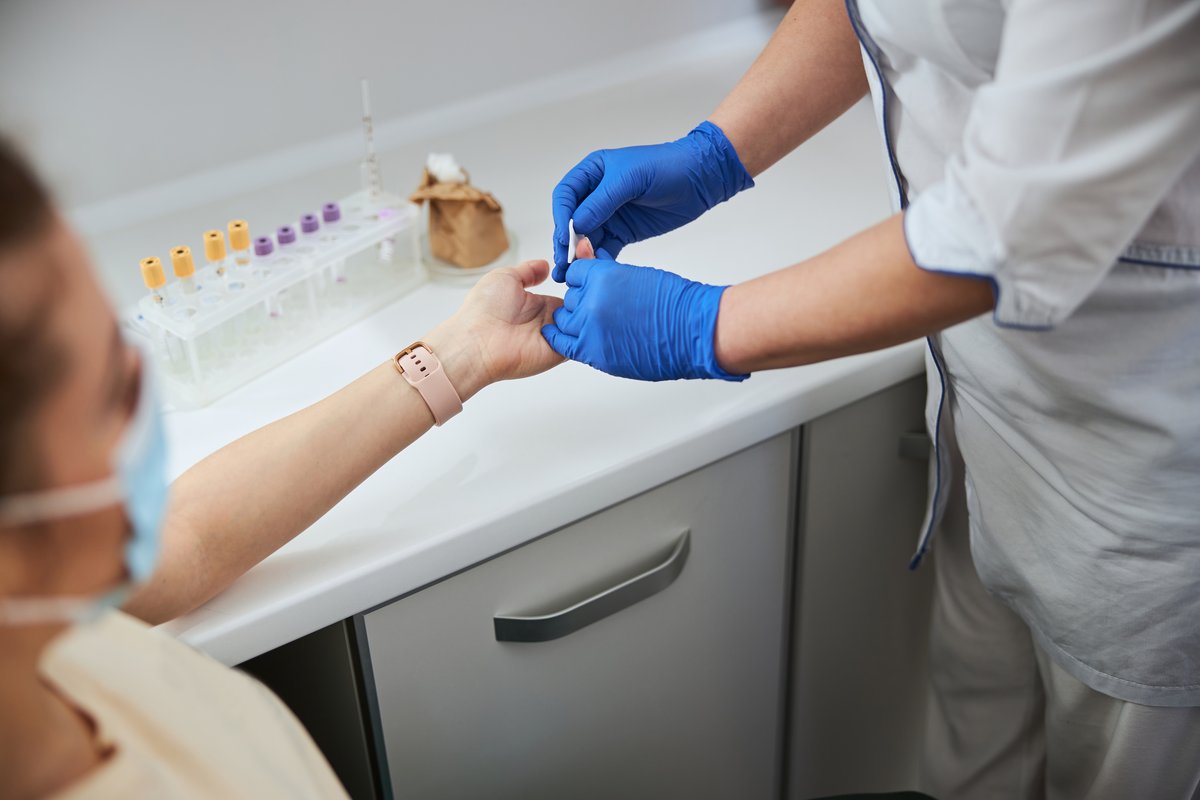
(March 2025) Using data from the Survey of Health, Retirement and Ageing in Europe (SHARE), researchers Dr Nis Borbye-Lorenzen and Dr Yacila Deza-Lougovski and colleagues from the Statens Serum Institut in Denmark, the Munich Research Institute for the Economics of Aging and SHARE Analyses and the University of the Bundeswehr Munich in a project funded by the US National Institute on Aging and led by PI Axel Börsch-Supan and Prof. Anna Rieckmann have developed a new, simple method to identify individuals at a higher risk of Alzheimer’s disease using a simple finger-prick blood test. This new approach could greatly simplify dementia risk screening on a large scale.
A Breakthrough in Screening, with Minimal Invasiveness
The research found that apolipoprotein E4 (apoE4) protein levels could be accurately detected from dried blood spot (DBS) samples, making large-scale screening for dementia risk more feasible and accessible.
This protein is the product of the APOE ε4 allele, a genetic variant known to increase the risk of Alzheimer's disease and other dementias. However, detecting this risk factor traditionally requires genetic testing, which can be invasive, expensive and ethically challenging in large survey samples.
What’s more, in a second study, the researchers found that people with detected levels of the apoE4 protein have lower cognitive performance, as it is commonly associated with the gene variant.
A Primer on Dried Blood Spot Sampling
Dried blood spot sampling involves collecting a small drop of blood from a finger prick, which is then dried on a special filter paper. This technique is non-invasive, cost-effective, and easy to transport, making it an ideal option for large-scale health screening.
Testing 16,000 Participants for Accurate Results
The team tested blood samples from nearly 16,000 people aged 50 and older, collected during Wave 6 of SHARE. Using a specially developed immunoassay, they were able to measure apoE4 protein levels with remarkable precision.
Protein levels from the samples showed two clear groups. One group had high levels, suggesting that these persons carry the APOE ε4 gene, while the other had low levels, suggesting they didn’t carry the gene.
When they checked these results against actual genetic data from a smaller group of deceased participants, the method was highly accurate – correctly identifying gene carriers 97% of the time and non-carriers 98% of the time.
Considerations When Testing DBS Samples
The authors caution that researchers planning to apply this method should be aware that environmental factors like shipping time of the samples, outside temperature, and the size of the collected blood spot all affected the protein levels slightly, but not enough to undermine overall accuracy.
Exploring Cognitive Health through SHARE Data
To gauge participants’ cognitive performance, the team used SHARE data collected from a battery of cognitive tests. These tests measured memory, awareness of time, verbal fluency, and basic maths skills. The results from these tests were combined into a single score. If someone scored significantly lower than the average, they were classified as having cognitive impairment. These data were then analysed to explore the links between apoE4 protein levels and cognitive health.
The Potential for Personalised Dementia Prevention
This new, easy-to-use method will make it easier for researchers to explore how apoE4 protein levels interact with lifestyle factors such as diet, exercise and social engagement to influence cognitive ageing. This could also pave the way for more personalised prevention strategies in the fight against dementia.
This research is important because it shows that measuring apoE4 levels in the blood early in the ageing process could help identify people at risk for cognitive decline. It also suggests that there might be ways to improve brain health by focusing on lifestyle changes or treatments that affect these protein levels.
Study by Borbye-Lorenzen N, Deza-Lougovski Y, Holmgaard S, et al. Assessment of circulating apoE4 levels from dried blood spot samples in a large survey setting. Alzheimer's Dement. 2024; 16:e12555. DOI: 10.1002/dad2.12555.
URL: https://doi.org/10.1002/dad2.12555
Deza-Lougovski YI, Weiss LM, Horton HM, Sun A, Borbye-Lorenzen N, Skogstrand K, Holmgaard S, Andersen-Ranberg K, Lundmark VP, Börsch-Supan A, Börsch-Supan M, Rieckmann A. Circulating apoE4 protein levels from dried blood spots predict cognitive function in a large population-based survey setting. Alzheimers Dement. 2024 Nov;20(11):7613-7623. doi: 10.1002/alz.14224.
URL: https://doi.org/10.1002/alz.14224
Picture: © Adobe Stock / Svitlana

